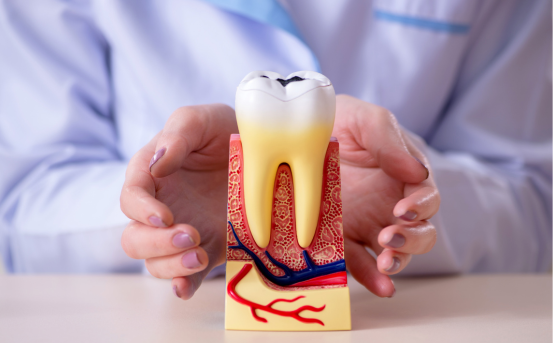If you’ve ever had a mild toothache, spotted a cavity, or chipped a tooth while eating, you’ve likely experienced the need for conservative dental care perhaps without even realizing it. Conservative dentistry is a specialized branch of dental treatment that focuses on preserving your natural teeth by addressing issues in their early stages. Rather than resorting to complex or surgical interventions, conservative dentistry emphasizes minimally invasive techniques that restore your teeth’s function and appearance while retaining as much of your natural tooth structure as possible. Understanding the causes for conservative dentistry can help you appreciate its importance.
This approach is particularly beneficial because it allows for early detection and treatment of problems like tooth decay, wear, fractures, or infections issues that, if ignored, can escalate into more serious oral health complications. Whether you’re dealing with a small cavity or minor trauma, conservative dentistry offers practical, cost-effective, and aesthetic solutions that help you maintain a healthy smile for life.
Causes for Conservative Dentistry
Conservative dentistry involves diagnosing, preventing, and treating dental diseases while conserving as much of the natural tooth structure as possible. The primary aim is to restore the form and function of damaged teeth using minimally invasive techniques.
Common procedures under conservative dentistry include:
- Dental fillings for cavities
- Inlays and onlays
- Root canal treatments
- Tooth bonding
- Preventive sealants
- Dental Caries (Tooth Decay)
The most common cause for conservative dentistry is tooth decay. When bacteria in your mouth produce acids that demineralize the enamel, small cavities form. If left untreated, the decay can penetrate deeper into the tooth.
- For early-stage cavities, your dentist may use fluoride treatments or small fillings.
- In more advanced cases, composite or amalgam fillings are used to restore the tooth.
- Tooth Wear and Abrasion
Over time, teeth can suffer wear due to factors like aggressive brushing, poor bite alignment, or grinding (bruxism). This can cause sensitivity, cracks, and loss of tooth structure.
- Dental bonding to restore worn surfaces
- Night guards to prevent grinding
- Composite fillings for minor wear
- Cracked or Fractured Teeth
Teeth can crack due to trauma, biting hard substances, or weakening from decay. Even a small fracture can lead to pain and increase the risk of infection.
- Small cracks: Composite fillings or onlays
- Moderate cracks: Ceramic inlays or full crowns
- Severe fractures: May require root canal therapy
- Minor Dental Trauma
A fall or minor accident can cause tooth chipping or enamel loss. While these might not seem urgent, they can expose the inner tooth and lead to long-term damage.
- Tooth-colored fillings
- Cosmetic bonding
- Veneers for improved aesthetics
- Root Infections and Pulpitis
When decay reaches the pulp (the inner soft tissue of the tooth), it causes inflammation and infection known as pulpitis. Symptoms include severe pain, sensitivity, and swelling.
- Root canal therapy (RCT), a core procedure in conservative dentistry, removes infected pulp and saves the natural tooth.
- Discolored or Misshapen Teeth
Aesthetic concerns are also addressed under conservative dentistry. Teeth that are discolored due to trauma, medications, or aging may be treated to improve their appearance.
- Composite veneers
- Tooth-colored restorations
- Cosmetic recontouring
- Preventive Dental Care
Preventive care is a crucial part of conservative dentistry. Even if you don’t have visible issues, preventive measures help avoid the need for more complex treatments in the future.
- Dental sealants to protect molars from decay
- Fluoride varnishes for enamel strengthening
- Regular cleanings and checkups
Why Choose Conservative Dentistry?
- Preserves natural teeth :- Retains original tooth structure wherever possible.
- Cost-effective :- Early interventions avoid expensive dental surgeries later.
- Minimally invasive :- Comfortable procedures with quick recovery.
- Improves function and aesthetics :- Restores your ability to chew and speak properly while maintaining your smile.
Conclusion
Conservative dentistry is not just about fixing dental problems it’s about preserving what’s already healthy, preventing future issues, and maintaining your natural teeth for as long as possible. Understanding the key causes for conservative dental treatments such as tooth decay, wear, trauma, or infection can empower you to seek help early and make informed choices about your oral health.
With advancements in dental technology and materials, conservative treatments are now more efficient, comfortable, and aesthetically pleasing than ever before. From tooth-colored fillings to root canal therapy and preventive sealants, these procedures are designed to be minimally invasive yet highly effective. They not only relieve pain and restore function but also support the longevity of your teeth and overall well-being.























